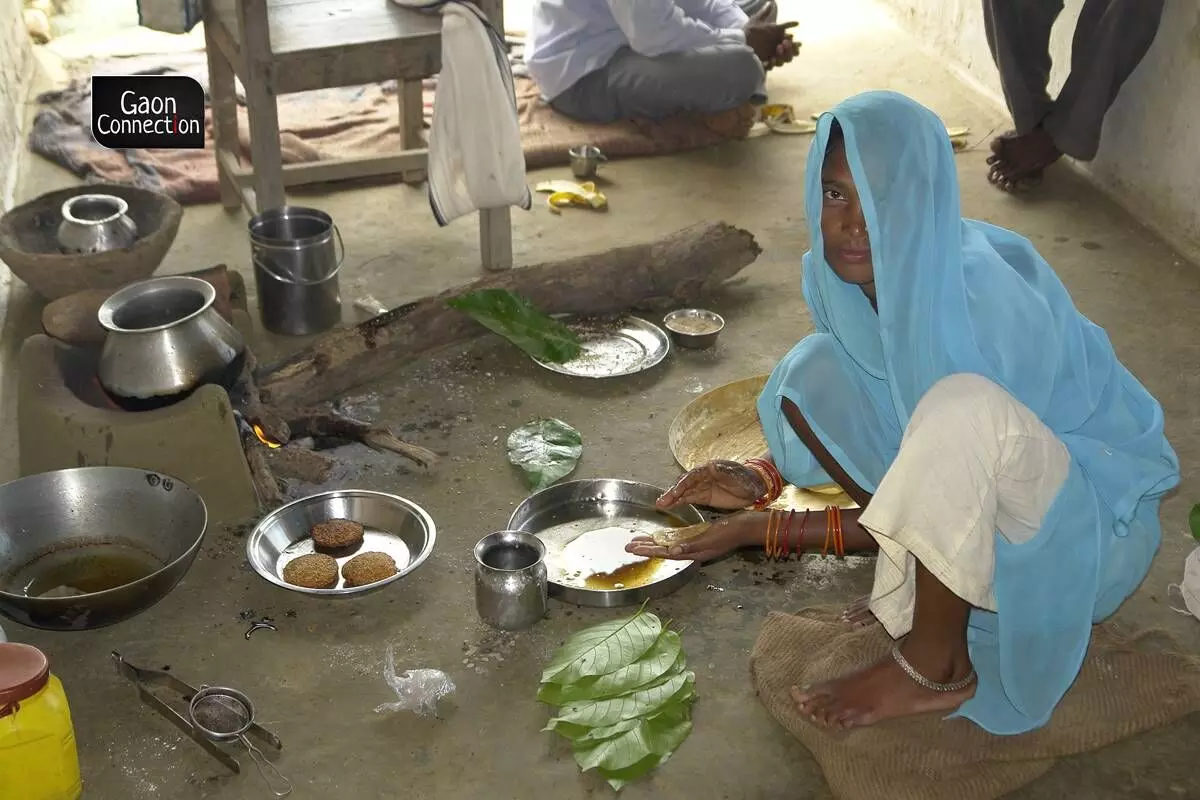Rural India: Consumption of Packaged Sugary Food On Rise, Access To Protein Declining — Study
A research study has found that India’s rural population is losing access to protein and the consumption of packaged sugary edibles and carbohydrates has increased. The study reasoned affordability of carbohydrates-laden food as the primary cause of the nutritional imbalance. The increase in consumption of sugars is linked with a rise in cardiovascular diseases and diabetes.
 गाँव कनेक्शन 20 Sep 2023 1:45 PM GMT
गाँव कनेक्शन 20 Sep 2023 1:45 PM GMT

The study found that protein-rich foods were sold at higher prices in Aurepalle compared to Dokur, whereas fat-rich food groups and discretionary food groups were relatively low-priced in Aurepalle.
India’s rural population is losing access to protein-rich food and has increased the consumption of packaged sugary edibles, a research study has concluded.
“The study in Telangana, India, shows that many rural families now eat more carbohydrates because they are more affordable and more convenient than trying to source limited protein and micronutrient rich options,” the study titled Assessing the rural food environment for advancing sustainable healthy diets: Insights from India mentioned.
The study mentioned that people are also eating more sugary packaged foods because they are easily available in stores and have a longer shelf life than healthy fruits and vegetables.
“Those who move to cities from rural areas also change what they eat because they are exposed to widespread packaged food advertising,” the study conducted by the Telangana-based International Crops Research Institute for the Semi-Arid Tropics stated.
Jacqueline Hughes, director general of the institute was quoted as saying that there is a need to work closer with the food processing industry to blend heritage with health by making nutritious products such as millet more attractive to consumers.
Also Read: Corn rotis and kahwa: Tea time in Kashmir’s Doodhpathri
“We are collectively responsible for nurturing a harmonious balance between nourishment and tradition by reinvigorating the rich tapestry of traditional food systems in rural India to combat the alarming surge in obesity and malnutrition,” he added.
This study was conducted in Aurepalle, Dokur villages, and the towns of Amangal and Devarakadra in Telangana, India.
The study found that protein-rich foods were sold at higher prices in Aurepalle compared to Dokur, whereas fat-rich food groups and discretionary food groups were relatively low-priced in Aurepalle.
It stated that the food environments in rural communities in India reflect a nutrient-poor and high-carbohydrate diet along with increasing addition of discretionary foods that have more added sugar.
“This trend bends toward staple and discretionary foods that consist of more refined carbohydrates with low fiber content. It was revealed from the FGDs [focus group discussions] that the rural communities regularly consumed the traditional deep-fried snacks (discretionary foods) sold by hawkers,” it added.
#RuralIndia #FoodSecurity #Nutrition
More Stories




